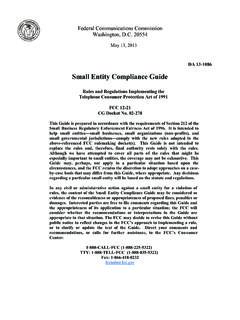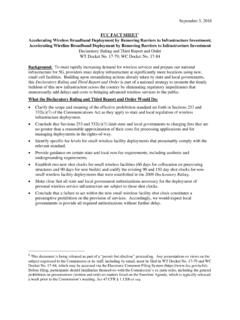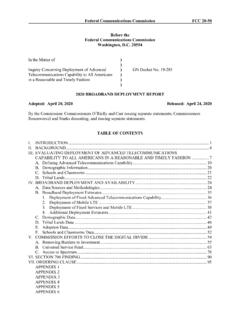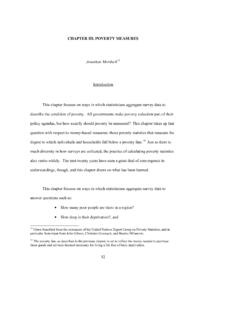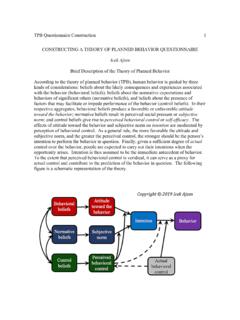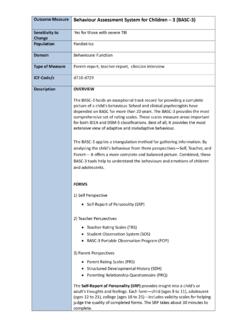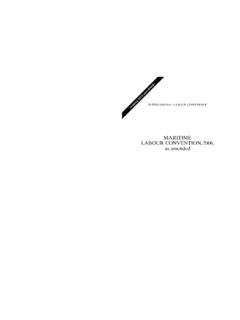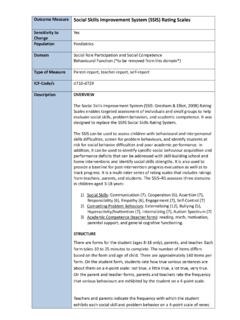Transcription of Federal Communications Commission FCC 20-187
1 Federal Communications Commission FCC 20-187 Before the Federal Communications Commission Washington, 20554 In the Matter of Advanced Methods to Target and Eliminate Unlawful Robocalls ) ) ) ) CG Docket No. 17-59 FOURTH REPORT AND ORDER Adopted: December 29, 2020 Released: December 30, 2020 By the Commission : TABLE OF CONTENTS Heading Paragraph # I. INTRODUCTION .. 1 II. BACKGROUND .. 3 III. DISCUSSION .. 13 A. Affirmative Obligations for Voice Service Providers .. 14 1. Respond to Traceback Requests .. 15 2. Take Steps to Effectively Mitigate Illegal Traffic when Notified by the Commission .. 22 3. Implement Effective Measures to Prevent New and Renewing Customers from Originating Illegal Calls.
2 32 4. Legal Authority .. 37 B. Expanding the Safe Harbor Based on Reasonable Analytics to Network-Based Blocking .. 39 C. Enhanced Transparency and Redress Requirements .. 48 1. Immediate Notification of Blocking .. 52 2. Blocked Calls List .. 62 3. Status of Call Blocking Dispute Resolution .. 71 4. Point of Contact for Verifying Call Authenticity .. 74 5. No Redress Requirements for Labeling .. 79 6. Legal Authority .. 82 D. Other Issues and Proposals .. 83 IV. PROCEDURAL MATTERS .. 86 V. ORDERING CLAUSES .. 91 APPENDIX A Final Rules APPENDIX B Comments Filed APPENDIX C Final Regulatory Flexibility Analysis I. INTRODUCTION 1. The Commission has made combatting robocalls its top consumer protection priority and has worked diligently to ensure that consumers get the calls they want and avoid the calls they do not.
3 Even with our work and the work of many others, unwanted calls persist. This prompted Congress to pass the Pallone-Thune Telephone Robocall Abuse Criminal Enforcement and Deterrence (TRACED) Federal Communications Commission FCC 20-187 2 This new law directs the Commission to encourage voice service providers to block unwanted calls by giving them safe harbors for erroneous blocking based, in whole or in part, on caller ID authentication information and to make it easier to identify and fix erroneous blocking. Today, we continue our work on these fronts. 2. In this Fourth Report and Order, we require voice service providers to meet certain affirmative obligations and to better police their networks against illegal We next expand our existing call blocking safe harbor to cover network-based blocking of certain calls that are highly likely to be illegal.
4 Third, we adopt rules to provide greater transparency and ensure that both callers and consumers can better identify blocked calls and ensure those that are wanted are un-blocked, consistent with section 10(b) of the TRACED Act. We also broaden our point-of-contact requirement to cover caller ID authentication concerns under section 4(c)(1)(C) of the TRACED Act. II. BACKGROUND 3. The Commission receives more complaints about unwanted calls than any other The Federal Trade Commission (FTC)4 and non-governmental entities report similarly high Unwanted calls can annoy, defraud, and lead to identity In recent years, the Commission has 1 Pallone-Thune Telephone Robocall Abuse Criminal Enforcement and Deterrence Act, Pub.
5 L. No. 116-105, 133 Stat. 3274 (2019) (TRACED Act). 2 For purposes of this Fourth Report and Order, we use the definition of voice service provider that we adopted in the Call Blocking Order and Further Notice. Specifically, voice service provider means any entity originating, carrying, or terminating voice calls through time-division multiplexing (TDM), Voice over Internet Protocol (VoIP), or commercial mobile radio service (CMRS). Advanced Methods to Target and Eliminate Unlawful Robocalls, CG Docket No. 17-59, Third Report and Order, Order on Reconsideration, and Fourth Further Notice of Proposed Rulemaking, 35 FCC Rcd 7614, 7615 (2020) (Call Blocking Order and Further Notice).
6 As we explained there, this definition is consistent with our use of this term in previous call-blocking actions and existing call-blocking rules, but is more extensive than the definition of voice service in section 4 of the TRACED Act and the First STIR/SHAKEN Order; that definition excludes intermediate providers. See TRACED Act 4(a)(2) (codified at 47 227b(a)(2)) (2019); Call Authentication Trust Anchor, Implementation of TRACED Act Section 6(a) Knowledge of Customers by Entities with Access to Numbering Resources, WC Docket Nos. 17-97 and 20-67, Report and Order and Further Notice of Proposed Rulemaking, 35 FCC Rcd 3241, 3300-01, Appx.
7 A (2020) (First STIR/SHAKEN Order). We found that adopting the narrower definition used in the TRACED Act in this proceeding would create inconsistency with our existing call blocking rules. To the extent that we rely on section 4 of the TRACED Act for some of the rules we adopt today, we have ensured that the subset of voice service providers covered by those rules are included in the TRACED Act s definition of voice service. 3 We received 185,000 such complaints in 2017, 232,000 in 2018, 193,000 in 2019, and 154,000 in 2020. FCC, Consumer Complaint Data Center, (last visited Dec. 20, 2020). Multiple factors can affect these numbers, including outreach efforts and media coverage on how to avoid unwanted calls.
8 Complaint numbers declined significantly during the first four months of the COVID-19 pandemic, reducing the total number of complaints the Commission received in 2020. 4 In fiscal year 2019, the FTC received an average of 315,000 robocall complaints per month. FTC, Biennial Report to Congress Under the Do Not Call Registry Fee Extension Act of 2007 at 3 (2019), 5 For example, Hiya reports that billion unwanted robocalls were placed to mobile phones in 2019. Hiya, State of the Call, (last visited Dec. 3, 2020). Similarly, YouMail estimates robocalls at billion for 2019. YouMail, Historical Robocalls By Time, (last visited Dec.)
9 3, 2020). 6 Significant scams include impersonation of Internal Revenue Service or Social Security Administration agents, among others. See, , FCC and TIGTA Warn Consumers of IRS Impersonation Phone Scam: Scam Has Cost Victims Tens of Millions of Dollars, DA 16-1392, Enforcement Advisory, 31 FCC Rcd 13184 (EB 2016) (warning ( ) Federal Communications Commission FCC 20-187 3 fought the flood of calls with aggressive enforcement and policy action. The latter has focused on two key areas: call blocking and caller ID authentication. 4. Commission Enforcement Against Illegal Calls. The Commission has taken aggressive enforcement action against those that make illegal robocalls.
10 In January 2020, the Commission proposed a nearly $13 million fine following a neighbor spoofing campaign of thousands of robocalls targeting specific consumers across several In June 2020, the Commission proposed a $225 million forfeiture for approximately one billion spoofed telemarketing These calls included prerecorded messages that falsely claimed affiliation with major health insurance In October 2020, the Commission fined a telemarketer $ million for making more than million illegally spoofed telemarketing calls over 14 The company manipulated the caller ID information so that calls appeared to come from local numbers, including numbers of Arizona Most recently, in November 2020, the Commission imposed a nearly $10 million fine against a telemarketer that spoofed a competitor s telephone 5.
